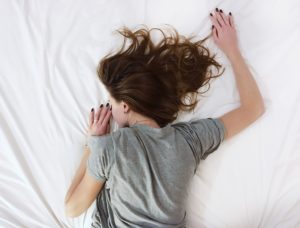08 Aug CPAP Vs. Oral Appliance Therapy: The Differences Explained

You’ve probably heard of CPAP machines and may have heard how important they are to better sleep. You may even have heard of Oral Appliance Therapy. But do you know how these different treatments compare to give you the best night’s sleep? At Crosspointe Sleep Solutions, we want to ensure that you have all the information you need to make a good decision regarding your sleep and overall health.
How They Work
CPAP machines and Oral Appliances work in very different ways. The CPAP machine forces air through your nose. This positive pressure keeps your airway open, preventing sleep apnea.
Oral appliance therapy addresses the root cause of sleep apnea. Your dentist will look at the shape of your tongue, mouth, and soft palate and design a small appliance to ensure your airway stays open.
Size
CPAP machines have been getting smaller over the years. You can purchase a CPAP machine that is a little bit larger than your tablet and sits comfortably on your bedside table. On the other hand, an Oral Appliance will fit comfortably in the palm of your hand.
Care
Your sleep specialist recommends that you clean the hoses and mask of your CPAP machine daily. This will involve either washing the parts every morning after use so that they have all day to dry or placing the components in an ionic cleaner that leaves an odor. You will need to brush your oral appliance with a soft toothbrush and toothpaste daily and allow it to air dry. Most dentists also encourage clients to soak the mouthpiece in denture cleaner once weekly for a deeper clean.
Side Effects
The CPAP machine is known for its side effects. Runny nose, sinus infections, facial irritation, and even partner complaints are familiar complaints with the loud and cumbersome machine. On the other hand, Oral Appliance Therapy has almost no side effects. Since the appliance fits in the mouth and makes no noise, sleep partners are unaffected.
Sleep Positions
Because of the placement of the mask, CPAP users have to sleep on their backs. Sleeping on their sides or stomachs puts pressure on the mask, breaking the airway seal and making the device less effective. But the oral appliance allows the sleeper to rest in any position desired and can even roll over without getting tangled in a hose.
All of these issues can be the difference between complying with your doctor’s orders and ignoring the problem of sleep apnea. At Crosspointe Sleep Solutions, we want to ensure that you not only understand the problem but have the solution in the palm of your hand.
